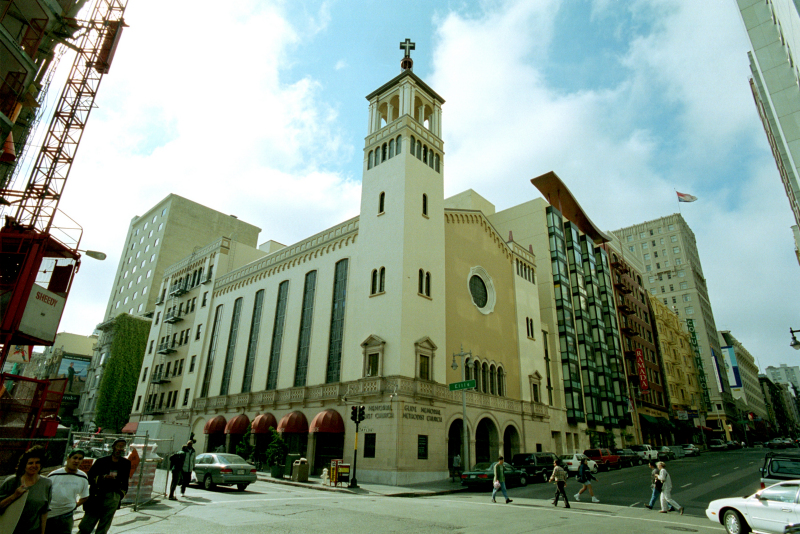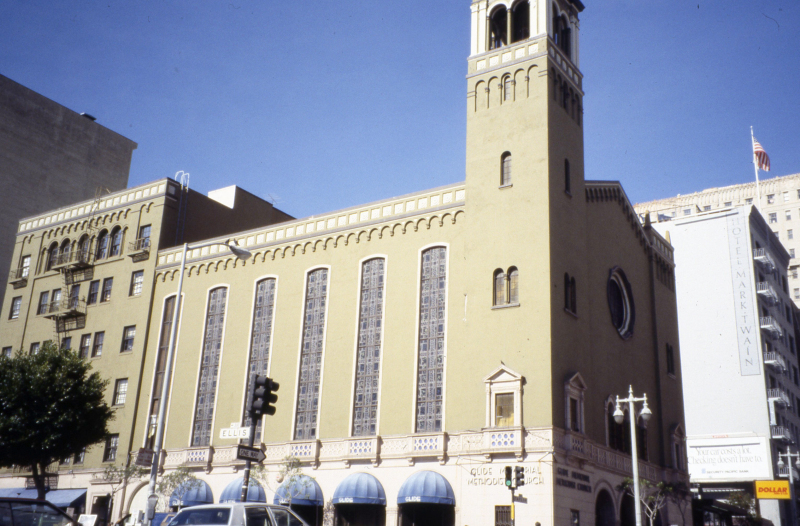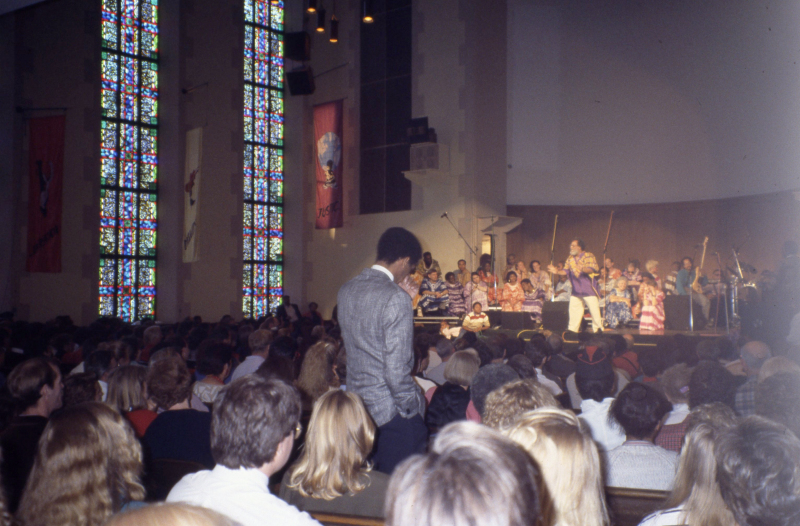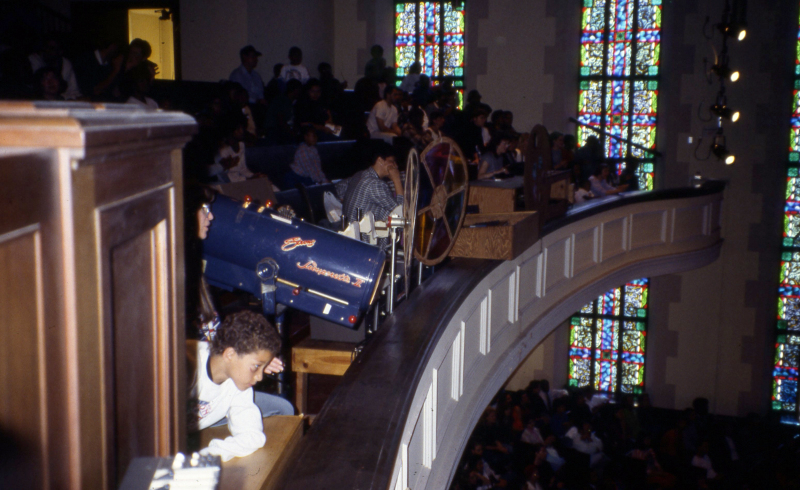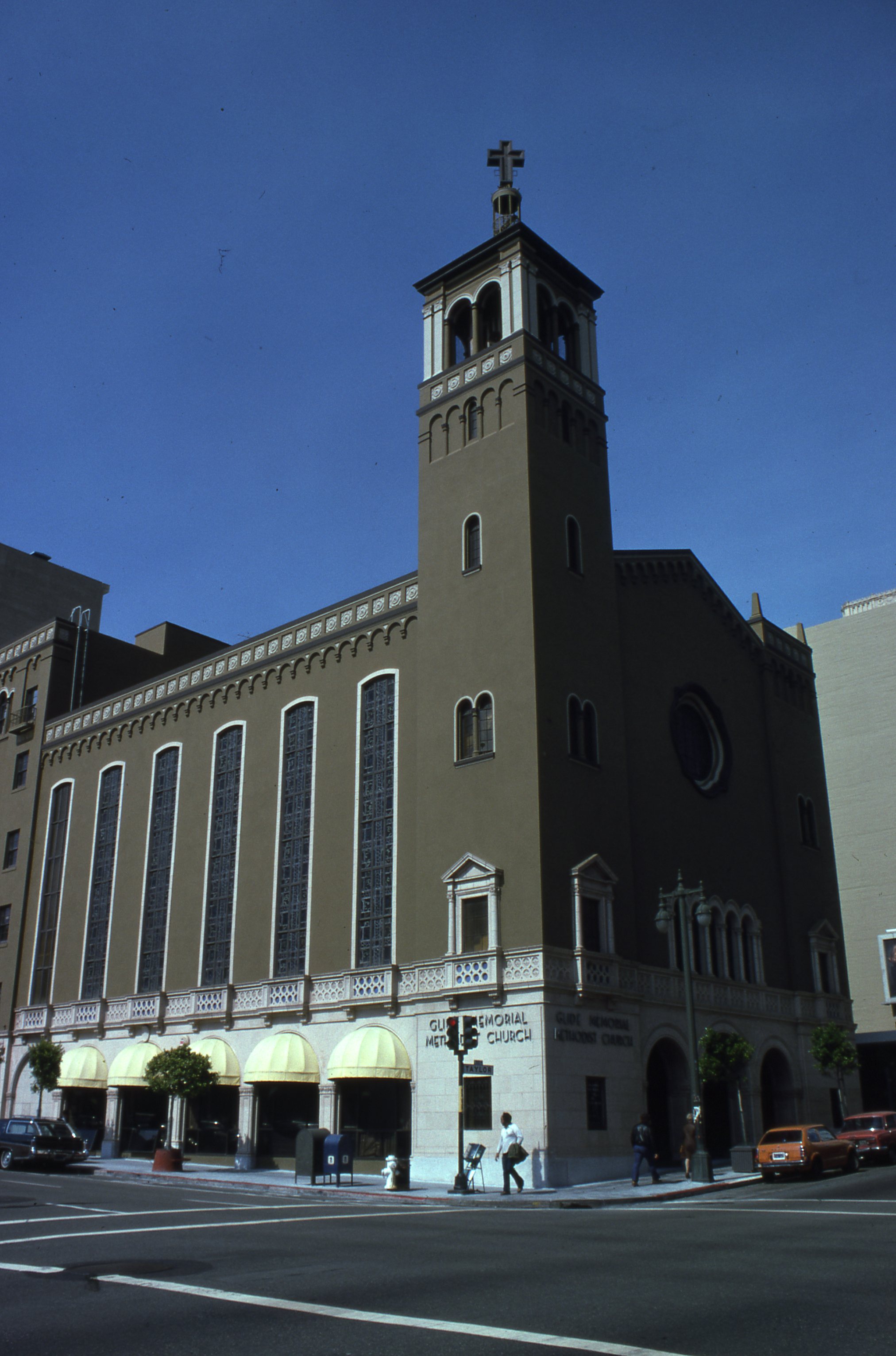Glide Church Renovations
- Subject:
- Mixed-Use (Unbuilt)
- Project Number:
- 0476
- Date:
- December 1970
- Client:
- Glide Memorial United Methodist Church
- Location:
- San Francisco, California
- Project Name:
- Glide Church Renovations
In 1920, Methodist philanthropist Lizzie Glide purchased a parcel of land at the intersection of Ellis and Taylor Streets in San Francisco and founded the Glide Foundation (Glide). In 1922, in addition to an office building and hotel, the foundation built the Glide Memorial United Methodist Church, as a memorial to Lizzie Glide’s millionaire cattleman husband, H. L. Glide.
The will of Lizzie Glide stipulated that the church was to serve needs of the immediate neighborhood. In 1922, the area was residential, fashionable, upper-middle-class, and white. By the 1960s, however, the area had declined: a slum in San Francisco’s tenderloin, it was filled with female and male prostitutes, drug addicts, gay people, and the homeless, living in terrible poverty. Every Sunday, the church was empty. Changes in the neighborhood cried out for both a new ministry and change in the church.
In 1966, Beverly Willis was retained by the Glide Church Foundation Board to help the church consider renovation suggestions. One suggestion was to remake the church into a multi-use space. A young minister, Reverend Cecil Williams, who had recently joined the church, argued that the foundation should respect the provisions of Lizzy Glide’s will, pointing to the clause stipulating that the church should minister to the surrounding neighborhood. He interpreted this to mean as the neighborhood existed at the time, in 1966, not in 1922. Working with the church’s project manager, Don Pollard, Willis explored ways to bring more relevance to the church and better serve the neighborhood’s current residents. The challenge, as Pollard and Willis saw it, was to dismantle preconceived notions about the church, which may have kept tenderloin inhabitants from entering. The team believed (as it turned out, correctly) that this could be accomplished symbolically. Pollard and Rev. Williams convinced the Glide Board to see the church as more of a community center than a traditional church space. Willis thought Glide could have both.
The architecture of the church interior was not elaborate. Its most dominant feature was its tall stained-glass windows facing Ellis Street. There seemed little to do except to paint the plaster ceiling and walls. So Willis focused instead on addressing the crowded space around the altar and on introducing lighting as well as sound and image projection to create a new “sense” of the place.
Willis’s architectural idea was to completely rework the sanctuary. The first step, after relocating the choir to the balcony, was to remove features bearing religious symbolism. The second step was to remake the communion rail, altar, and pulpit as movable furniture, so they could be moved into storage and returned to the space for church services as needed. Thus, Glide would be able to readily function as either church or community center without much effort or advanced notice.
In place of a traditional altar, Willis designed a semicircular stage, raised two feet off the floor, with sweeping, semi-circular stairs fanning out toward the audience. The steps were a physical and psychological device, intended as an invitation. “Come to me,” they intimated. And people did, sitting on the steps at Rev. Williams’s feet as he preached.
Willis suggested initiating a two-way conversation between the minster and the people; Rev. Williams liked this idea. The architect had a state-of-the-art, two-way speaker system installed that would pick up the voices of both minister and audience. Like Christ walking amongst and ministering to His people, the audio system permitted the Reverend to move around the stage, down the steps, and into the audience.
Willis also designed a light show that continuously illuminated the interior during worship ceremonies or community activities. By projecting images and multiple hues of color on the church’s sanctuary and sidewalls, this innovative feature of the design altered the sensory experience of visitors in the interior space. Rather than making architectural changes to the interior walls, Willis used light to create designs. Unable to predict the audiences’ potential reaction to the light effects, Willis made it something that could be easily and inexpensively changed. The light show became popular and remained in use for many years.
In case the idea of hosting a church service without religious symbols backfired, Willis presented designs (executed in cardboard) of the movable communion rail, pulpit, and sacrament table. These could be set up on the stage to form the setting for a traditional church service. Intended for temporary use, while permanent items were being built, they were stored in a back room—where they stayed. After the audience experienced the new environment, no one wanted a change. The idea of movable furniture was abandoned.
Rev. Williams loved preaching in the setting devoid of religious symbols. Within two years of its renovation, with Williams now as primary pastor, the church packed two services each Sunday. People came from all over San Francisco to worship at Glide. With this new audience, Williams was financially able to conduct outreach to the adjacent community. This would include building housing for the homeless. This provides dramatic evidence affirming Willis’s belief that design can communicate, affect perception, evoke an emotional response, and motivate behavior.
Glide Church has become a counter-culture rallying point in San Francisco and today is one of the most prominently liberal churches in the United States. It has garnered attention not only for its world-class Gospel Choir but also for its numerous social service programs. Its contributions to the community have been recognized by public figures such as Maya Angelou, Oprah Winfrey, Bill Clinton, and Warren Buffett.
Willis also designed a nearby youth club run by the church and catering to underage, often runaway, kids. Instead of giving it a community center appearance, Willis designed it to look like a smoke-filled pool parlor (although smoking and drinking alcoholic beverages was not permitted on site). The kids loved it. They came and hung out, just as the church had envisioned.
